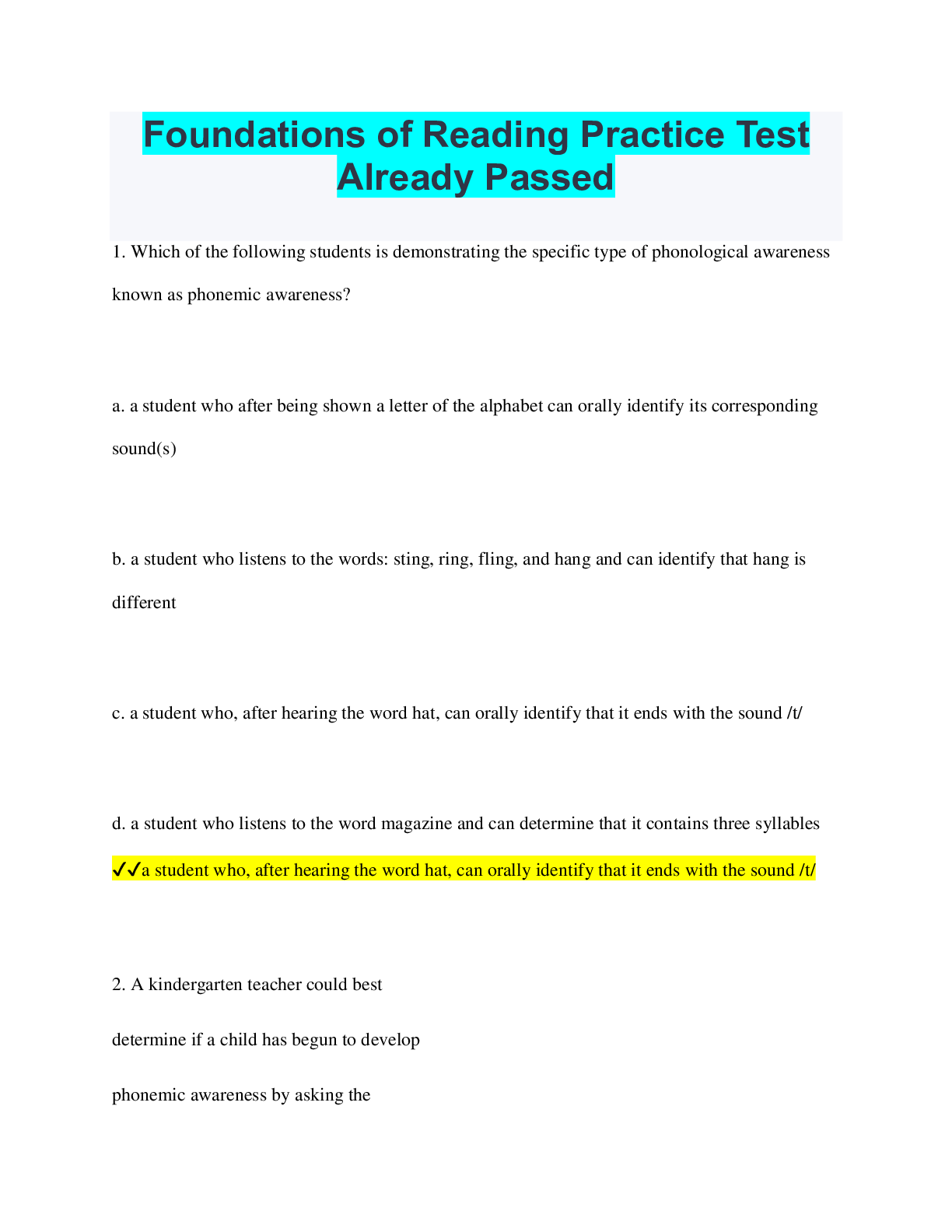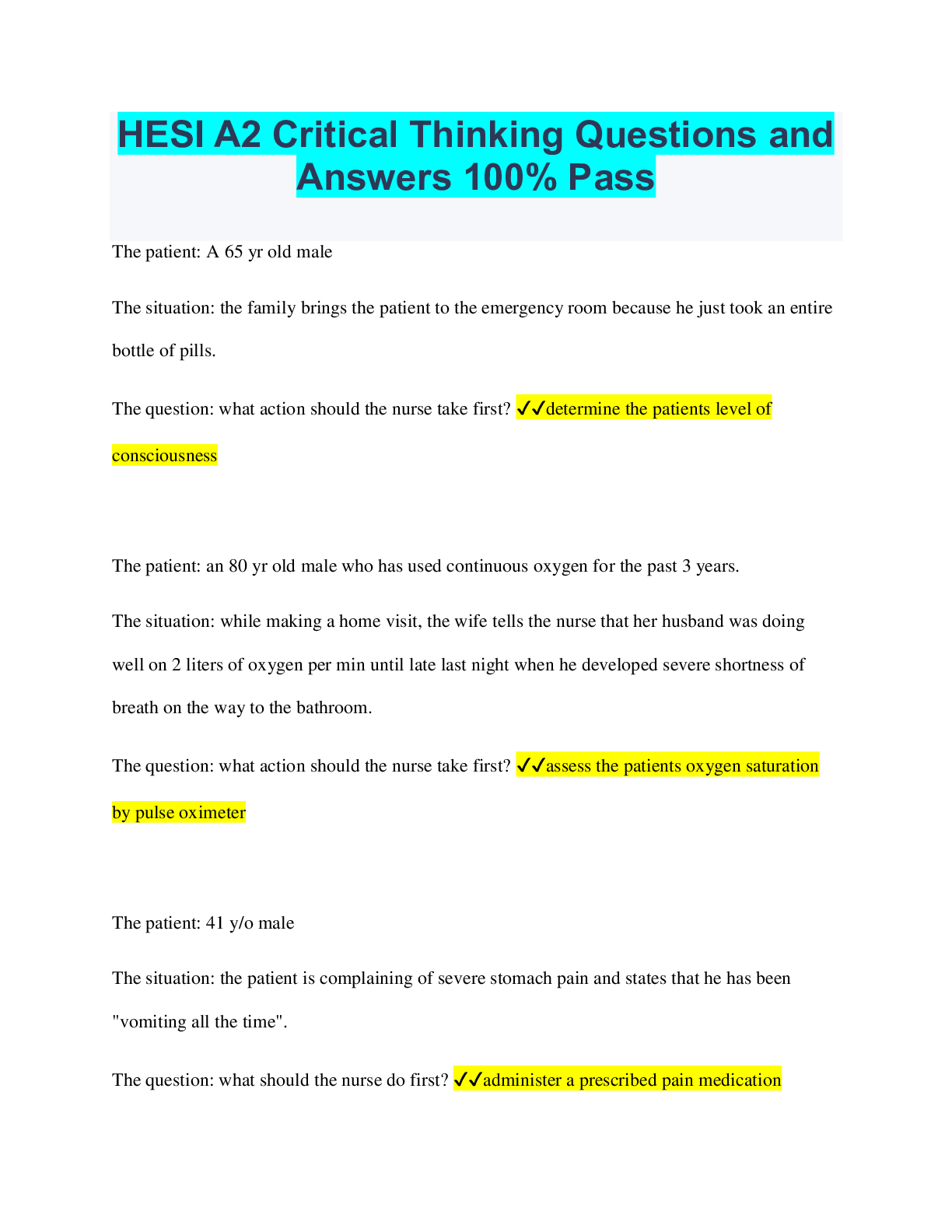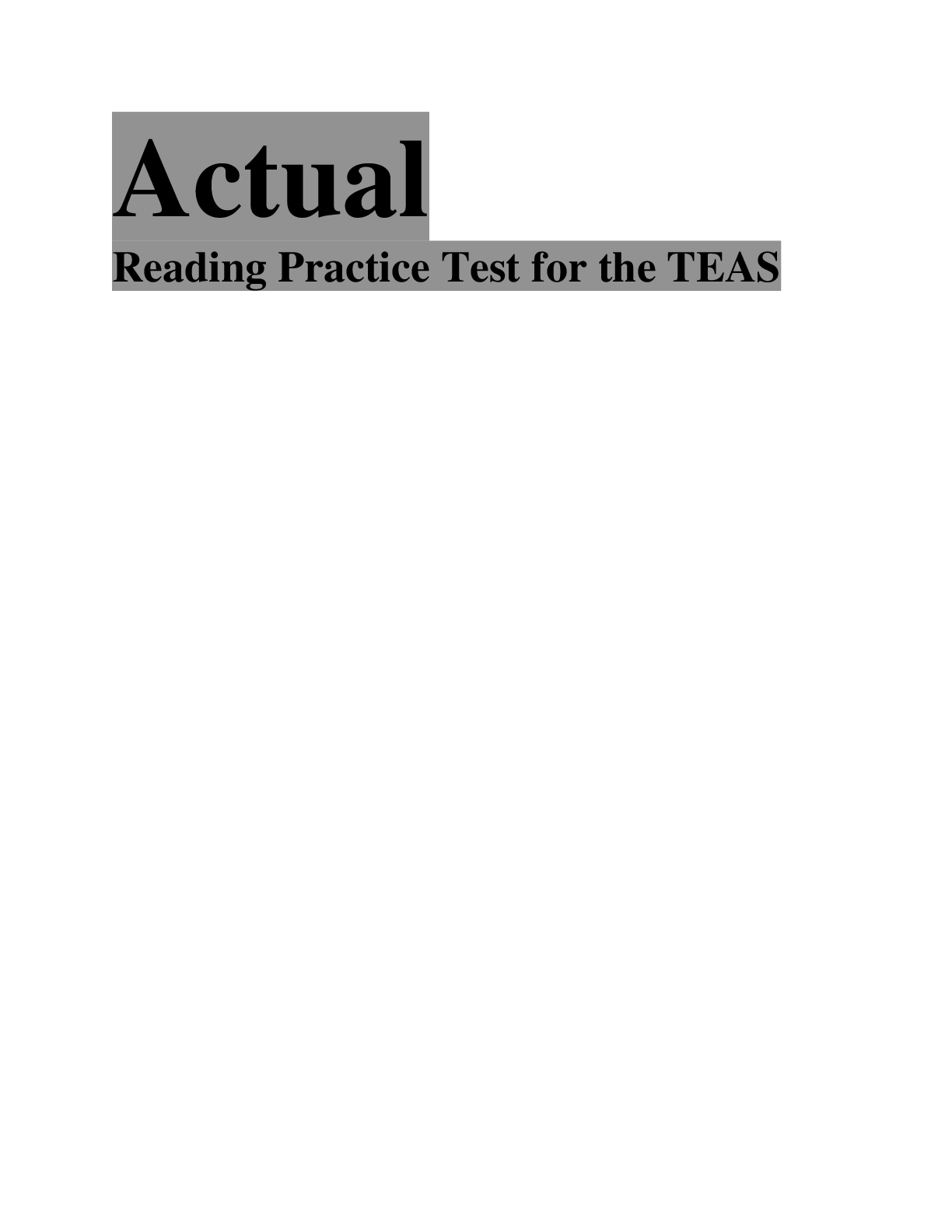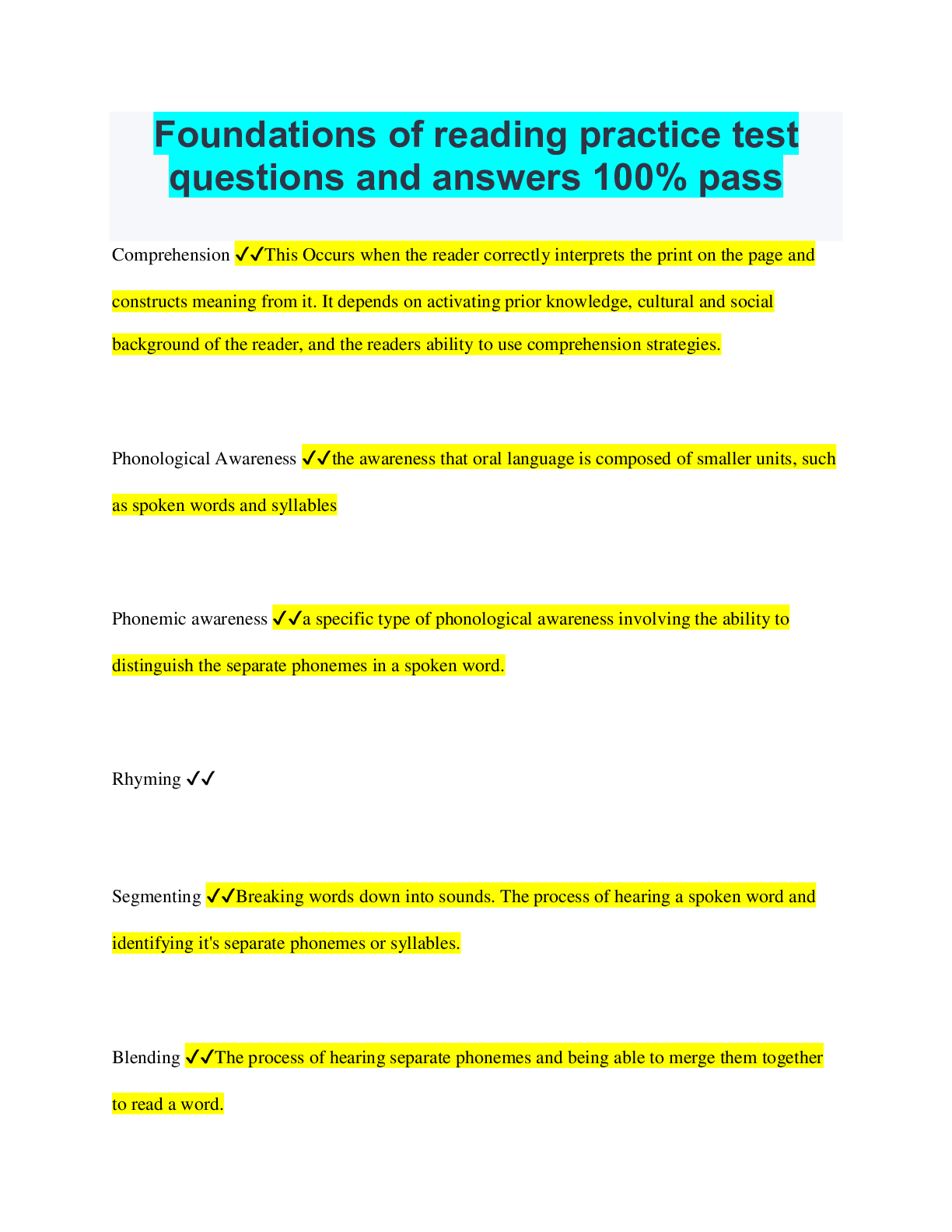Education > QUESTIONS & ANSWERS > Foundations of Reading Practice Test Already Passed (All)
Foundations of Reading Practice Test Already Passed
Document Content and Description Below
Foundations of Reading Practice Test Already Passed 1. Which of the following students is demonstrating the specific type of phonological awareness known as phonemic awareness? a. a student who af... ter being shown a letter of the alphabet can orally identify its corresponding sound(s) b. a student who listens to the words: sting, ring, fling, and hang and can identify that hang is different c. a student who, after hearing the word hat, can orally identify that it ends with the sound /t/ d. a student who listens to the word magazine and can determine that it contains three syllables ✔✔a student who, after hearing the word hat, can orally identify that it ends with the sound /t/ 2. A kindergarten teacher could best determine if a child has begun to develop phonemic awareness by asking the child to: A. count the number of words the child hears in a sentence as the teacher says the sentence. B. say the word cat, then say the first sound the child hears in the word. C. point to the correct letter on an alphabet chart as the teacher names specific letters. D. listen to the teacher say boat and coat, then identify whether the two words rhyme. ✔✔B. say the word cat, then say the first sound the child hears in the word. 3. As students begin to read, the ability to blend phonemes orally contributes to their reading development primarily because it helps students: A. recognize and understand sight words in a text. B. use knowledge of letter-sound correspondence to decode words. C. guess the meaning of unfamiliar words from their context. D. divide written words into onsets and rimes. ✔✔use knowledge of letter-sound correspondence to decode words. A teacher holds up a series of familiar objects, asking students to name each object and isolate the final sound they hear. This type of activity would be most appropriate for a student who: A. needs help developing phonemic segmentation skills. B. is performing below grade-level benchmarks in reading fluency. C. lacks automaticity in word recognition. D. has difficulty sounding out phonetically regular one-syllable words. ✔✔needs help developing phonemic segmentation skills. 5. Phonemic awareness contributes most to the development of phonics skills in beginning readers by helping them: A. recognize different ways in which one sound can be represented in print. B. count the number of syllables in a written word. C. identify in spoken language separate sounds that can be mapped to letters. D. understand the concept of a silent letter. ✔✔identify in spoken language separate sounds that can be mapped to letters. 6. Which of the following first-grade students has attained the highest level of phonemic awareness? A. a student who, after hearing the word hot and the sound /ĭ/, can substitute /ĭ/ for /ŏ/ to make the word hit B. a student who can orally segment the word wonderful into won-der-ful C. a student who, after hearing the words fish and fun, can identify that they both begin with the same phoneme, /f/ D. a student who can orally segment the word train into its onset and rime ✔✔a student who, after hearing the word hot and the sound /ĭ/, can substitute /ĭ/ for /ŏ/ to make the word hit 7. Asking students to listen to a word (e.g., same) and then tell the teacher all the sounds in the word is an exercise that would be most appropriate for students who: A. have a relatively low level of phonological awareness. B. are beginning to develop systematic phonics skills. C. have a relatively high level of phonemic awareness. D. are beginning to master the alphabetic principle. ✔✔have a relatively high level of phonemic awareness. A kindergarten teacher asks a small group of students to repeat after her. First, she says the word grape and then pronounces it as gr and ape. Next, she says the word take and then pronounces it as tand ake. This activity is likely to promote the students' phonemic awareness primarily by: A. helping them recognize distinct syllables in oral language. B. encouraging them to divide words into onset [Show More]
Last updated: 2 years ago
Preview 1 out of 75 pages

Buy this document to get the full access instantly
Instant Download Access after purchase
Buy NowInstant download
We Accept:

Also available in bundle (1)

Foundations of Reading Bundled Exams Questions and Answers Already Passed
Foundations of Reading Bundled Exams Questions and Answers Already Passed
By Nutmegs 2 years ago
$24.5
18
Reviews( 0 )
$11.00
Can't find what you want? Try our AI powered Search
Document information
Connected school, study & course
About the document
Uploaded On
Apr 18, 2023
Number of pages
75
Written in
Additional information
This document has been written for:
Uploaded
Apr 18, 2023
Downloads
0
Views
99













 Latest Questions and Answers with Explanations, All Correct Study Guide, Download to Score A.png)





